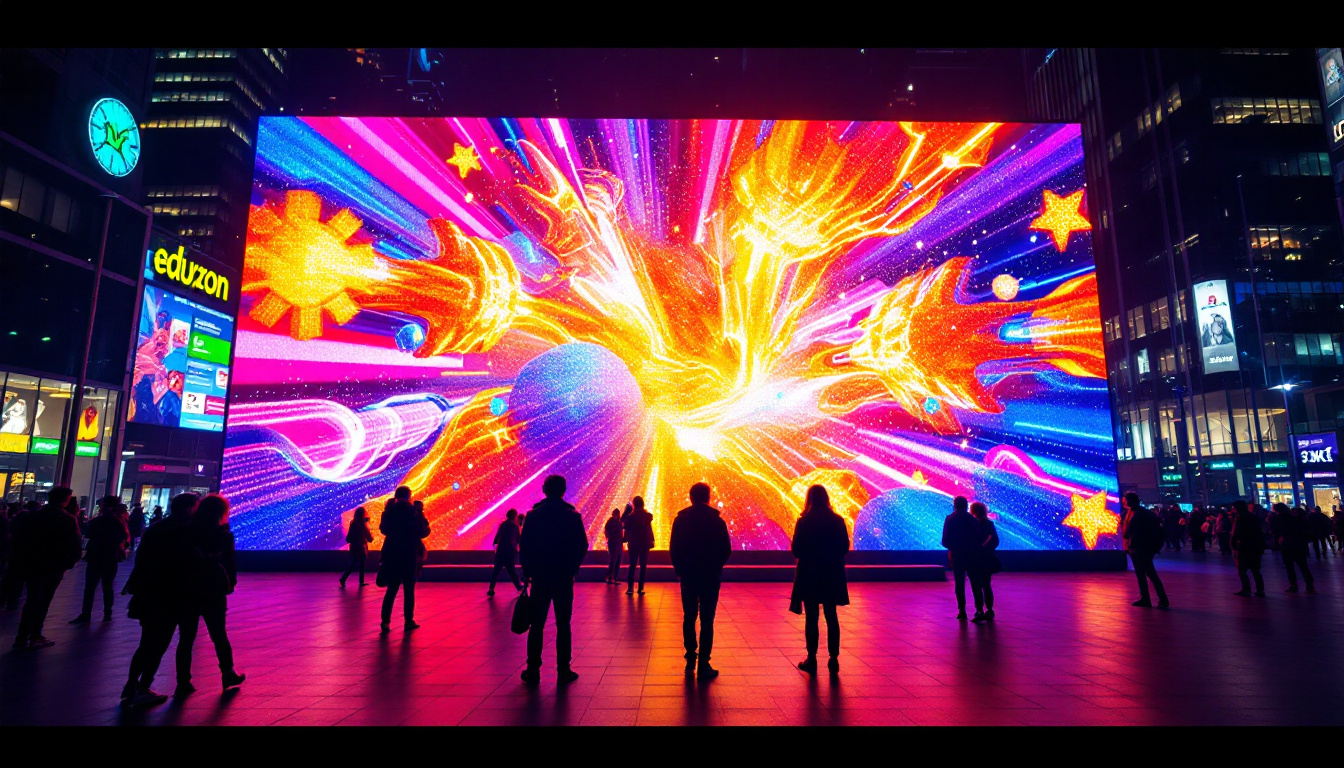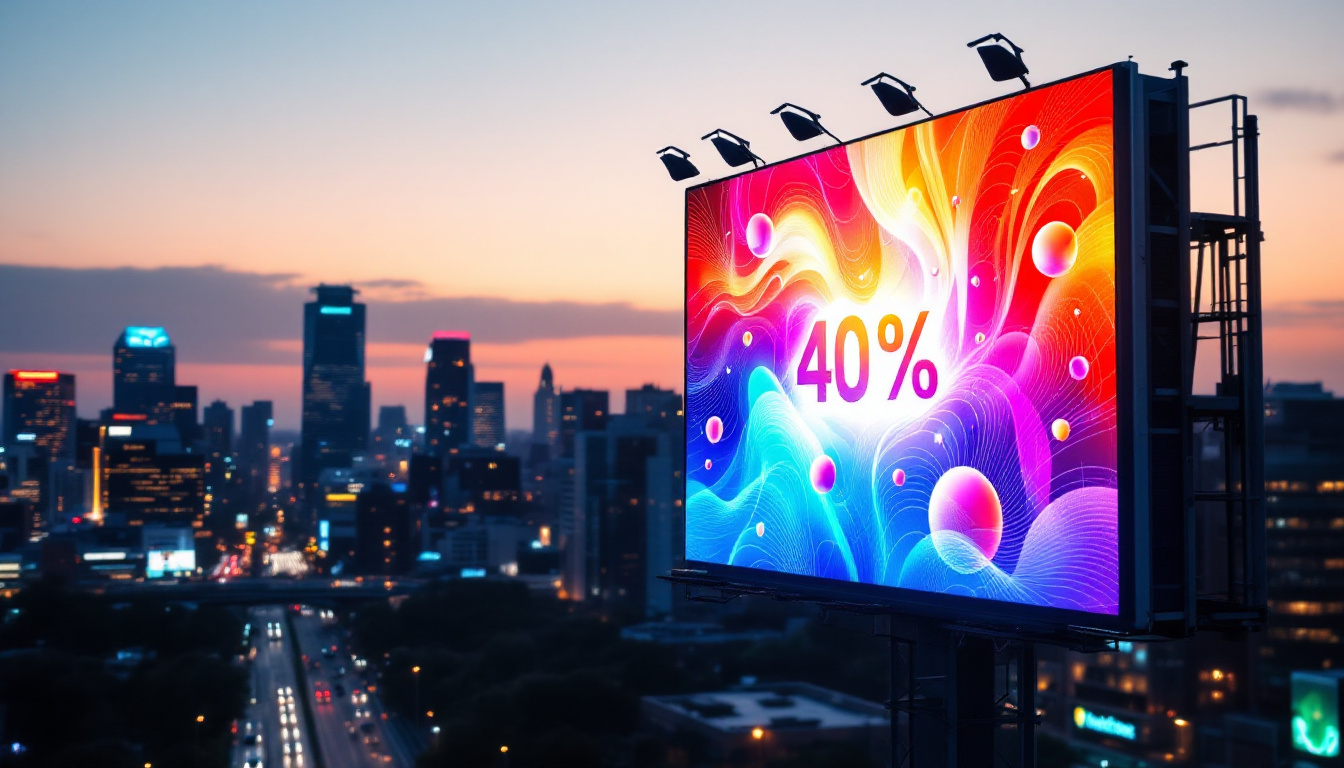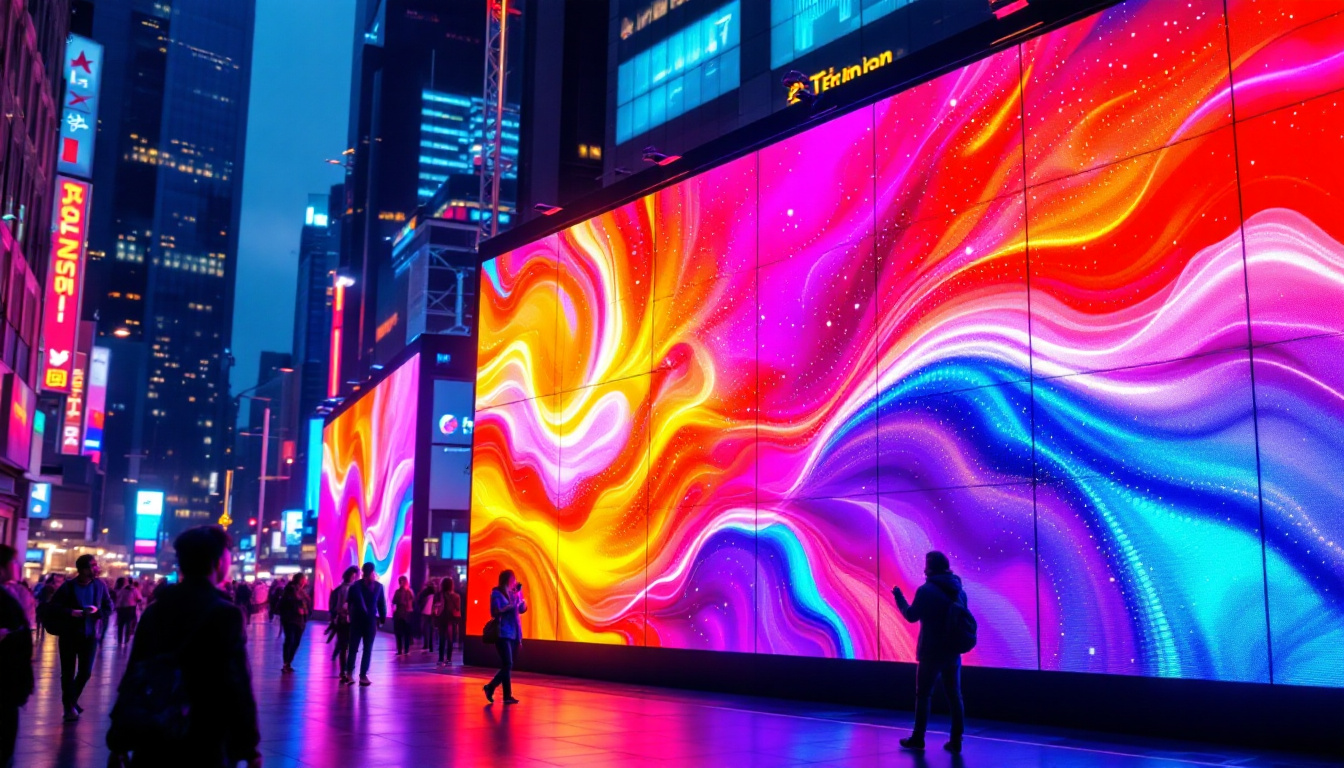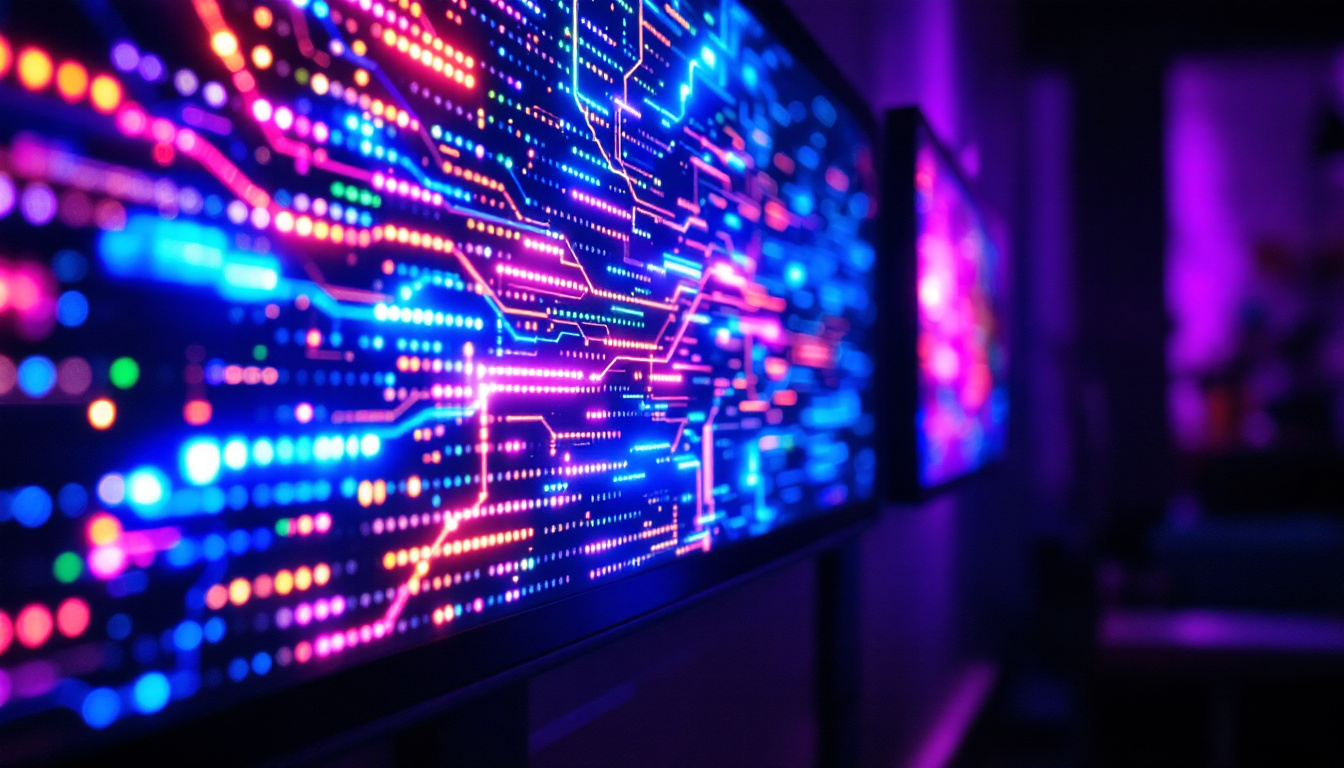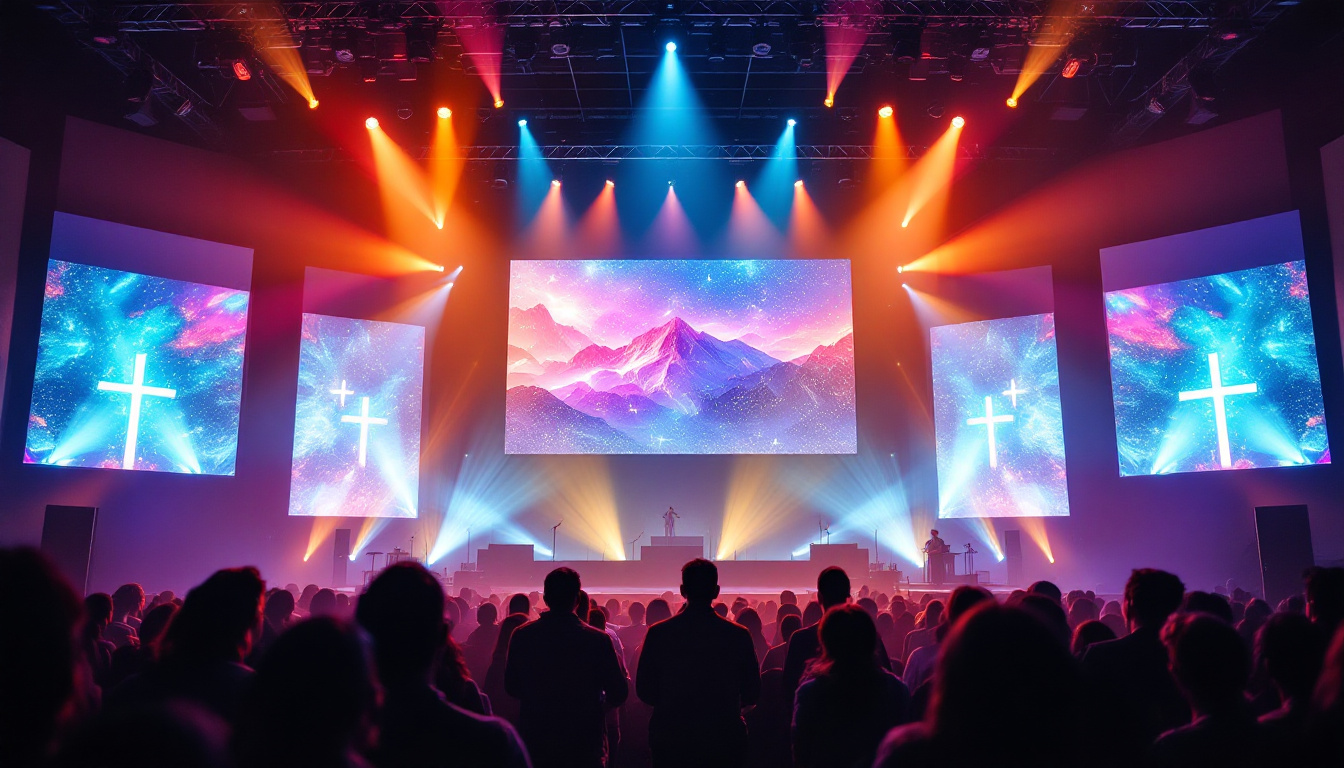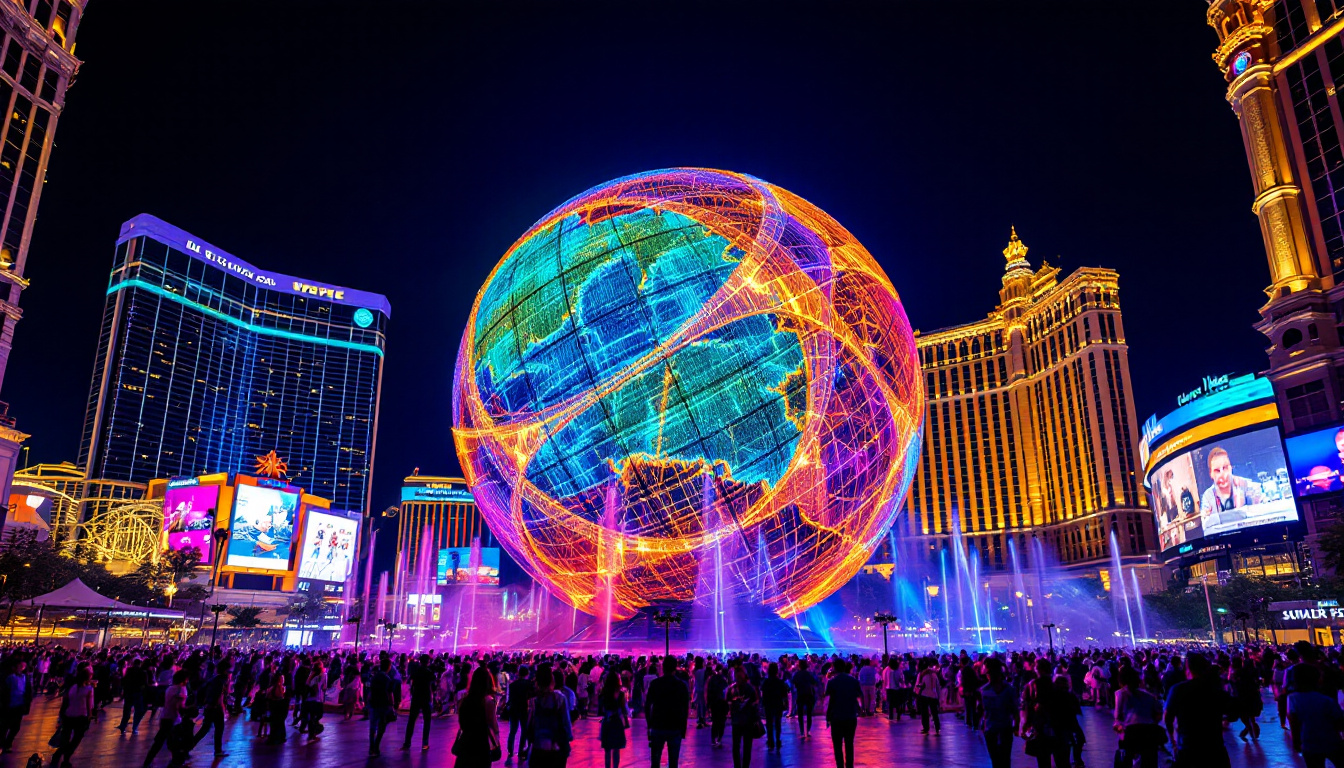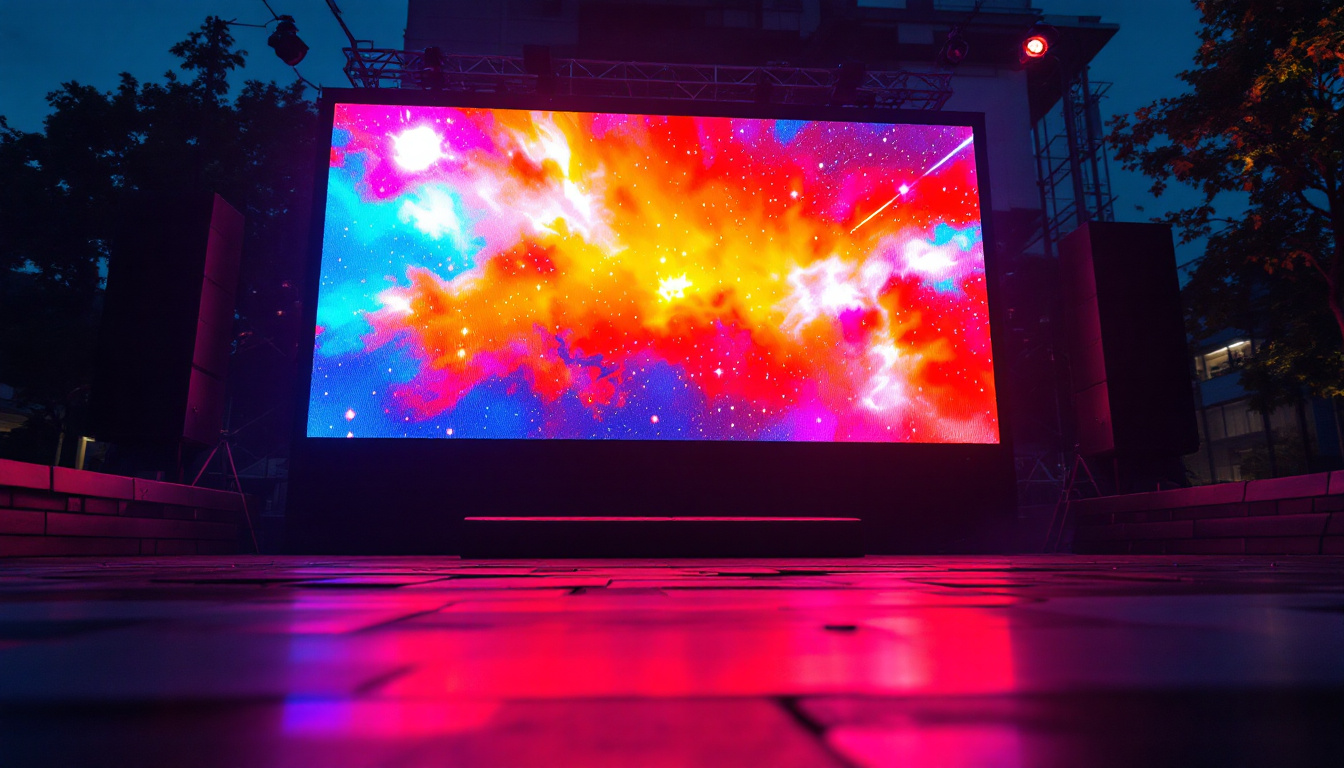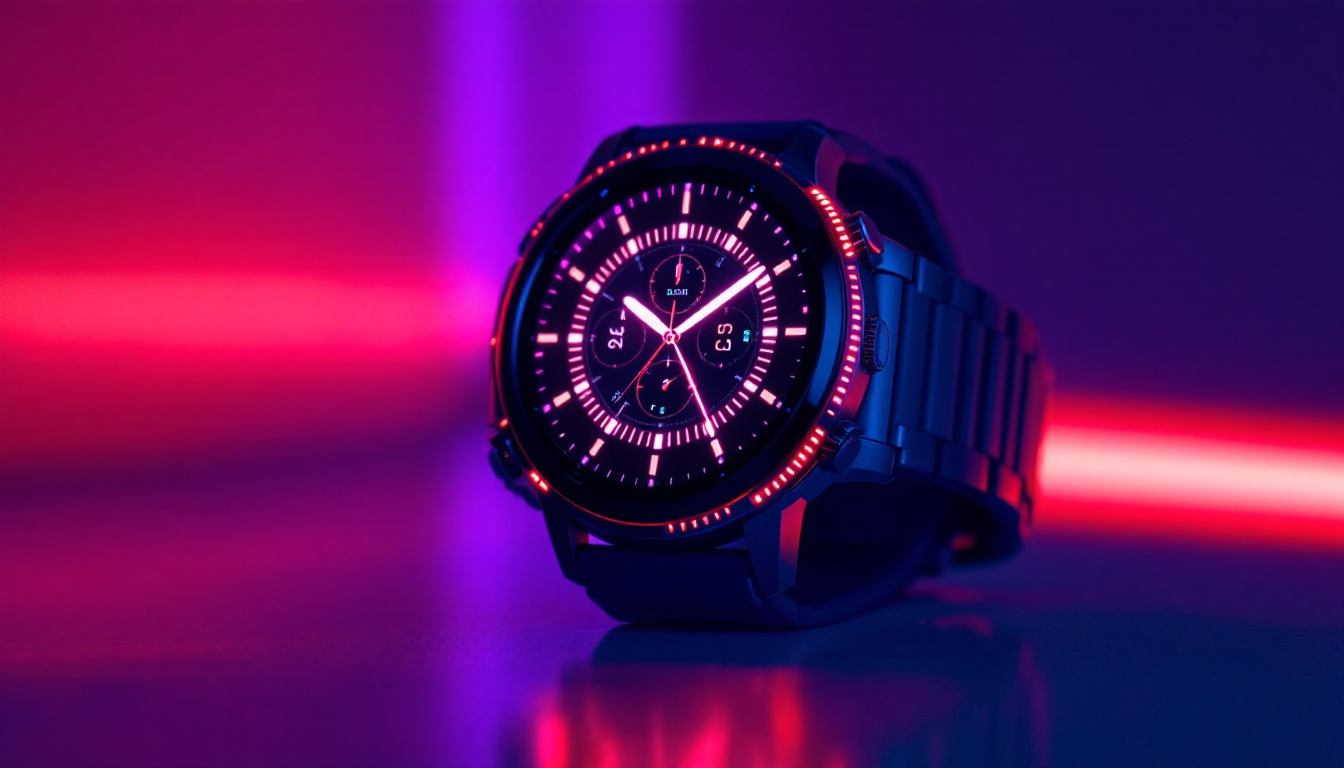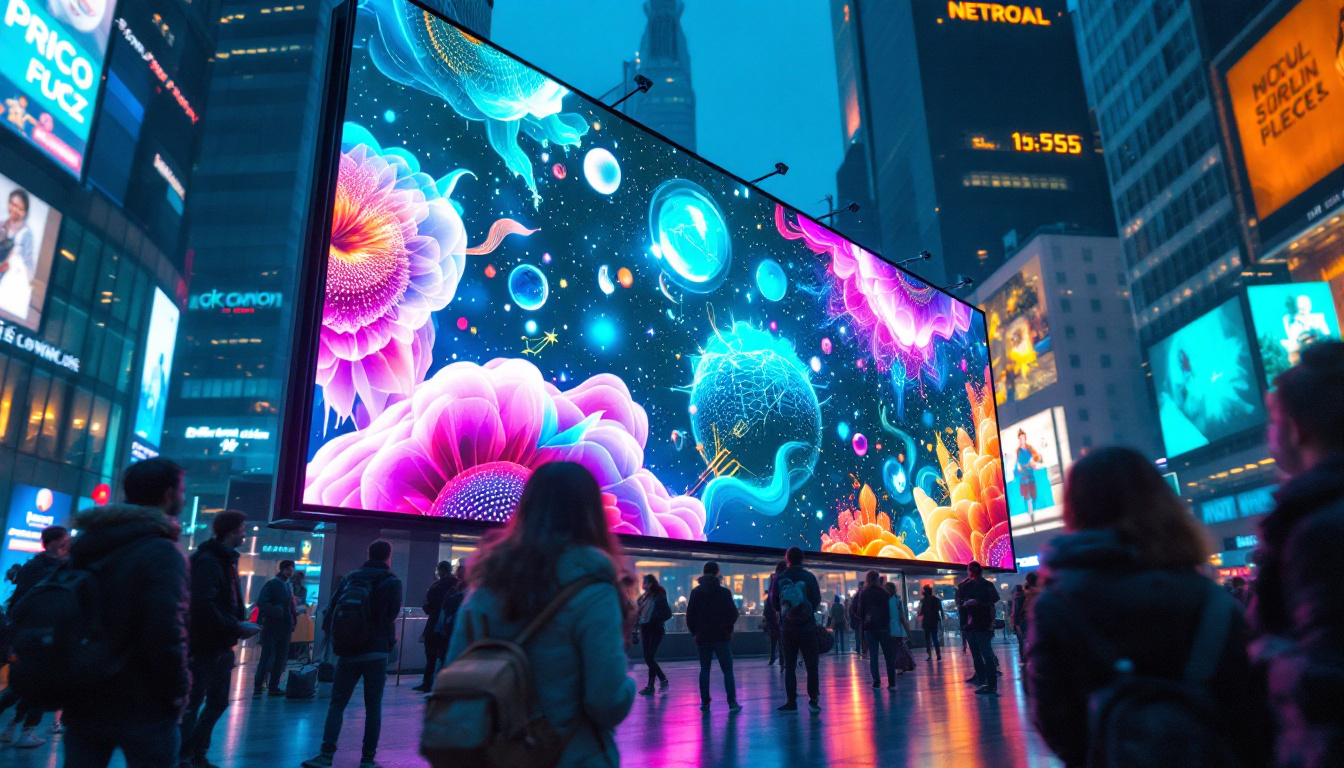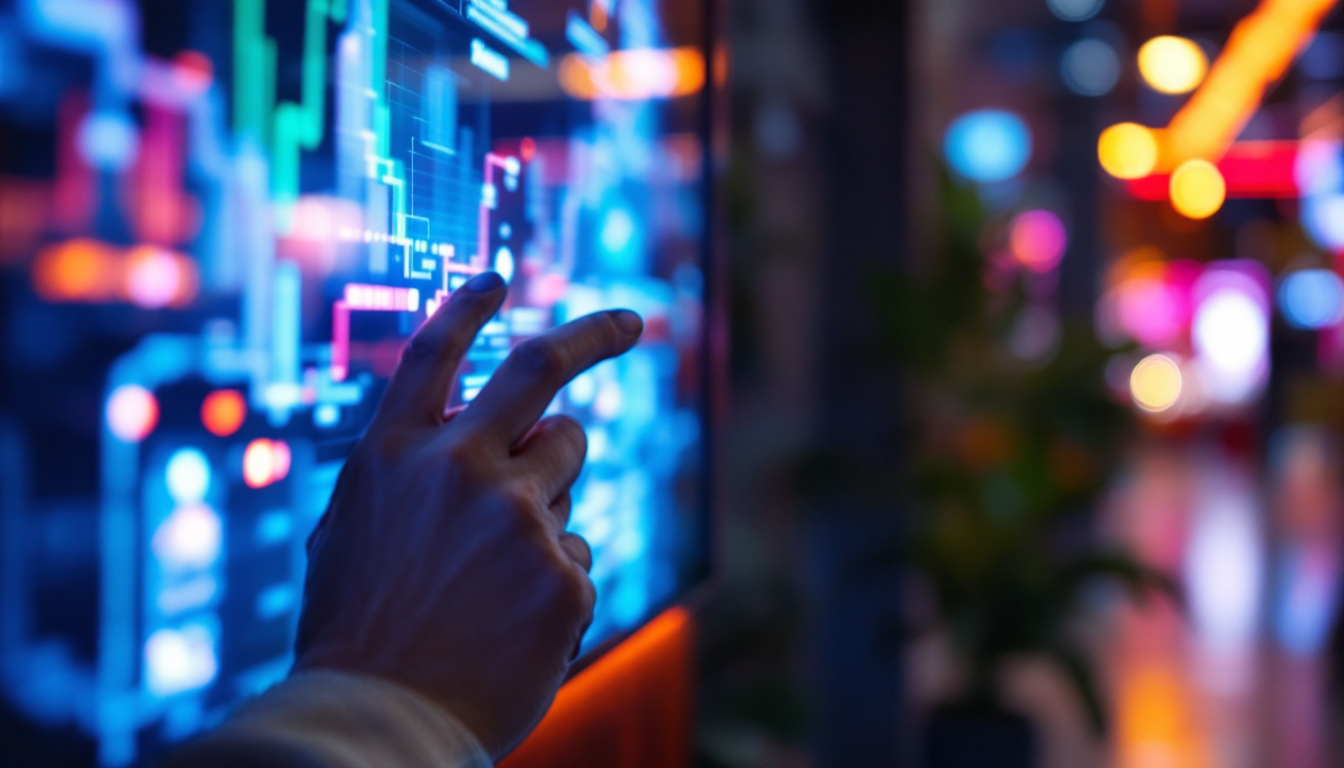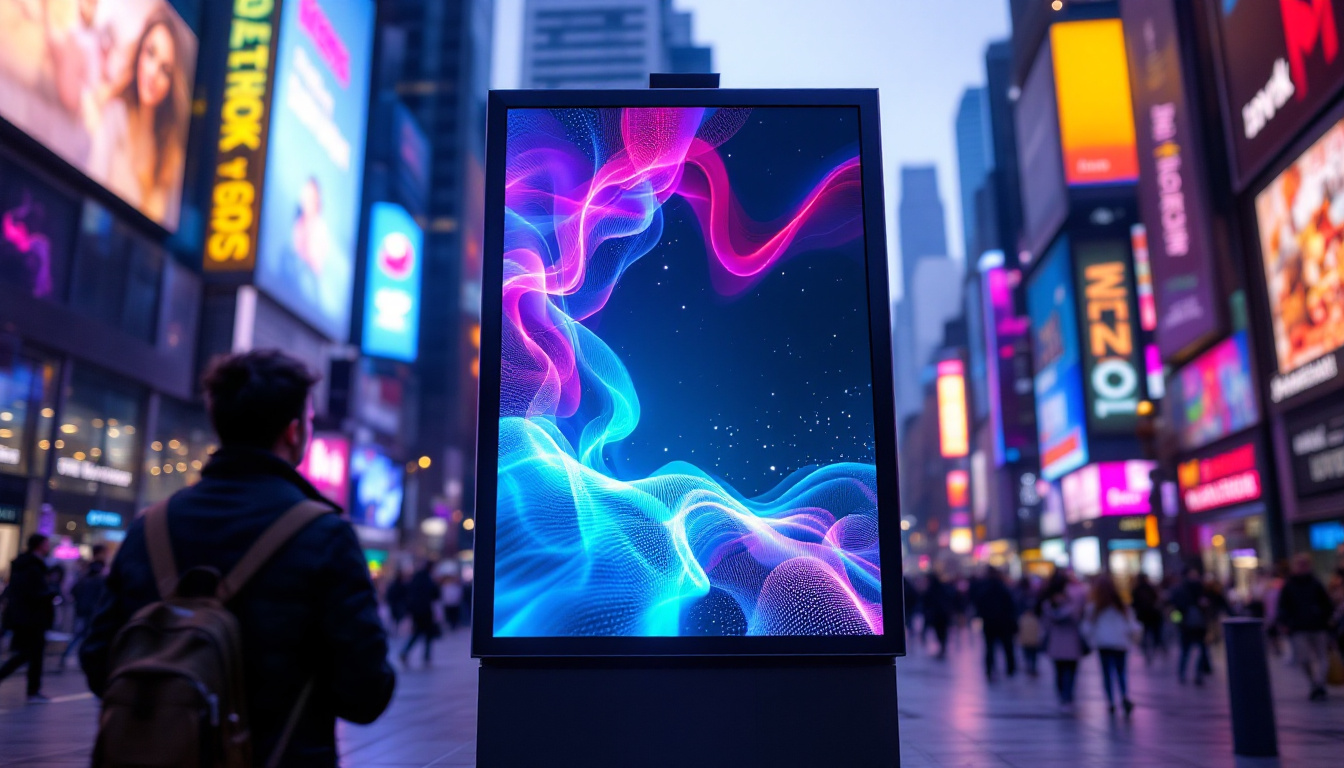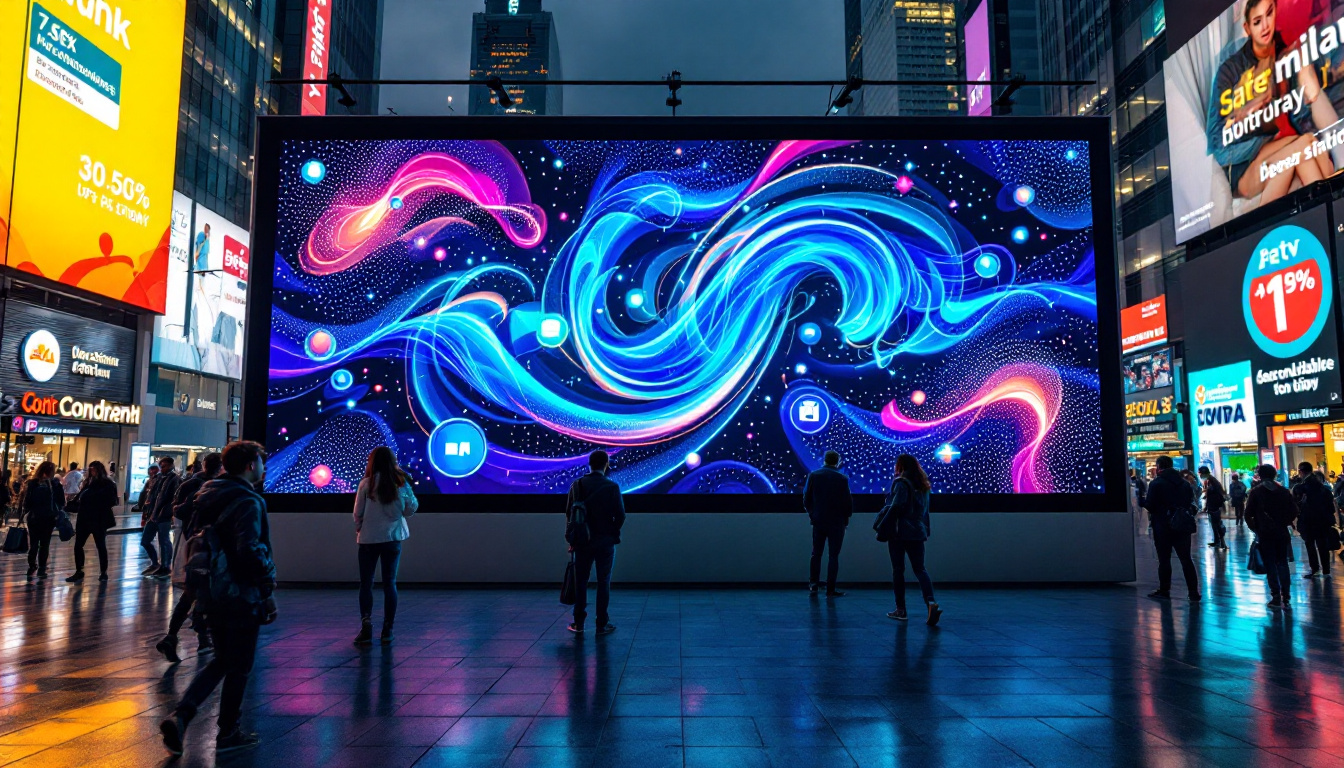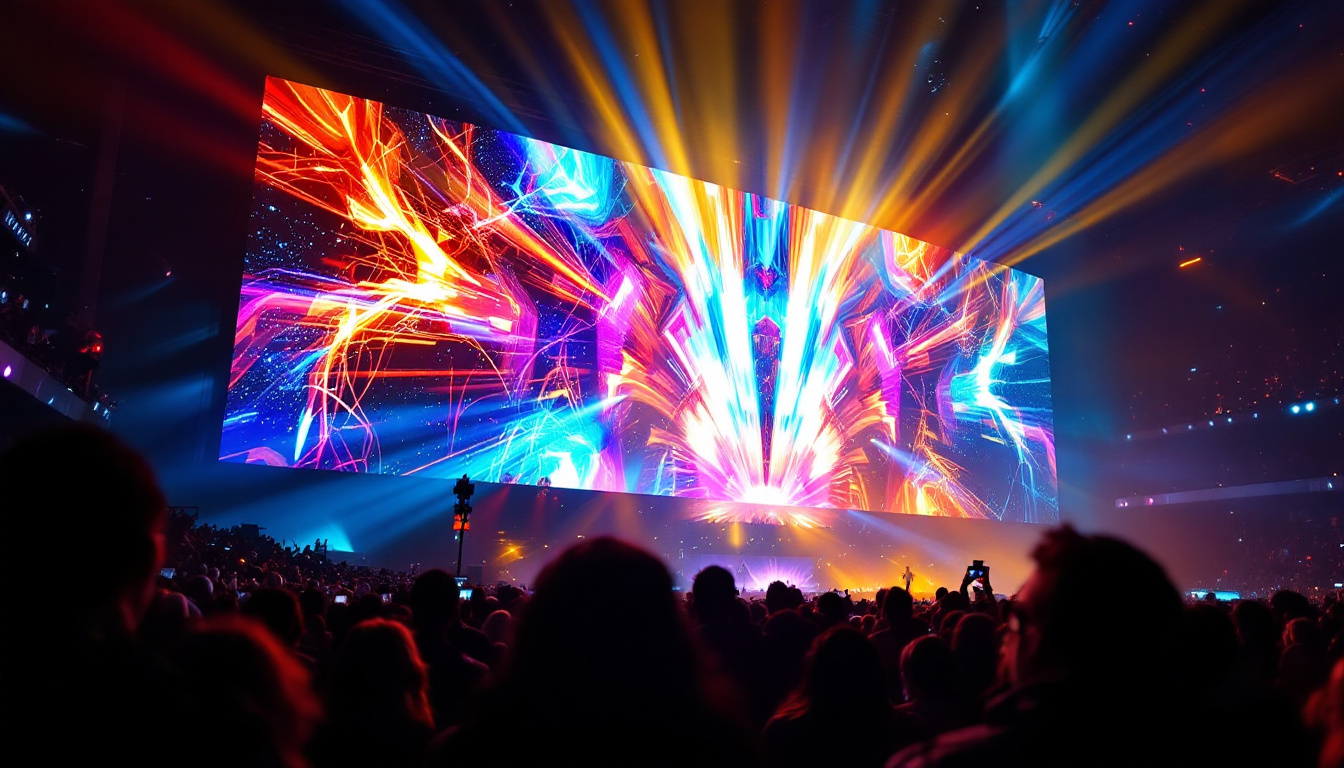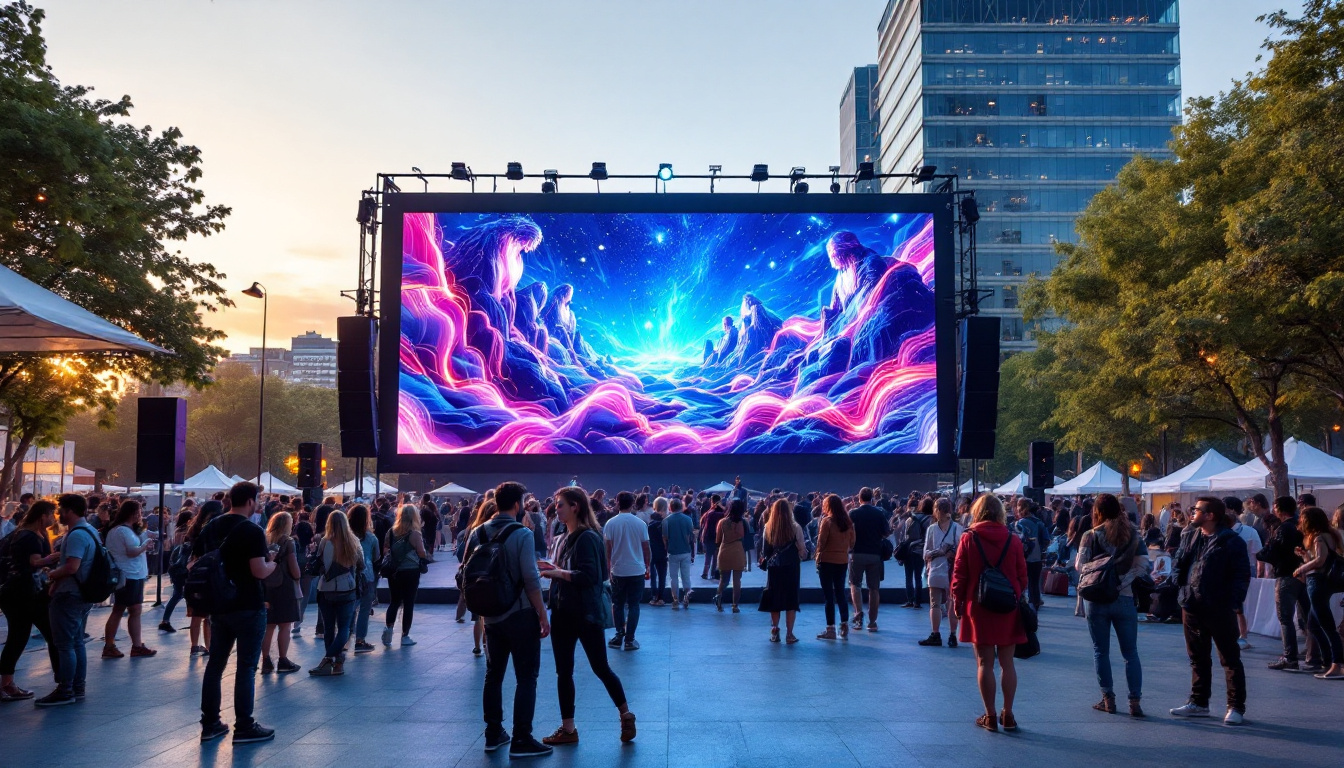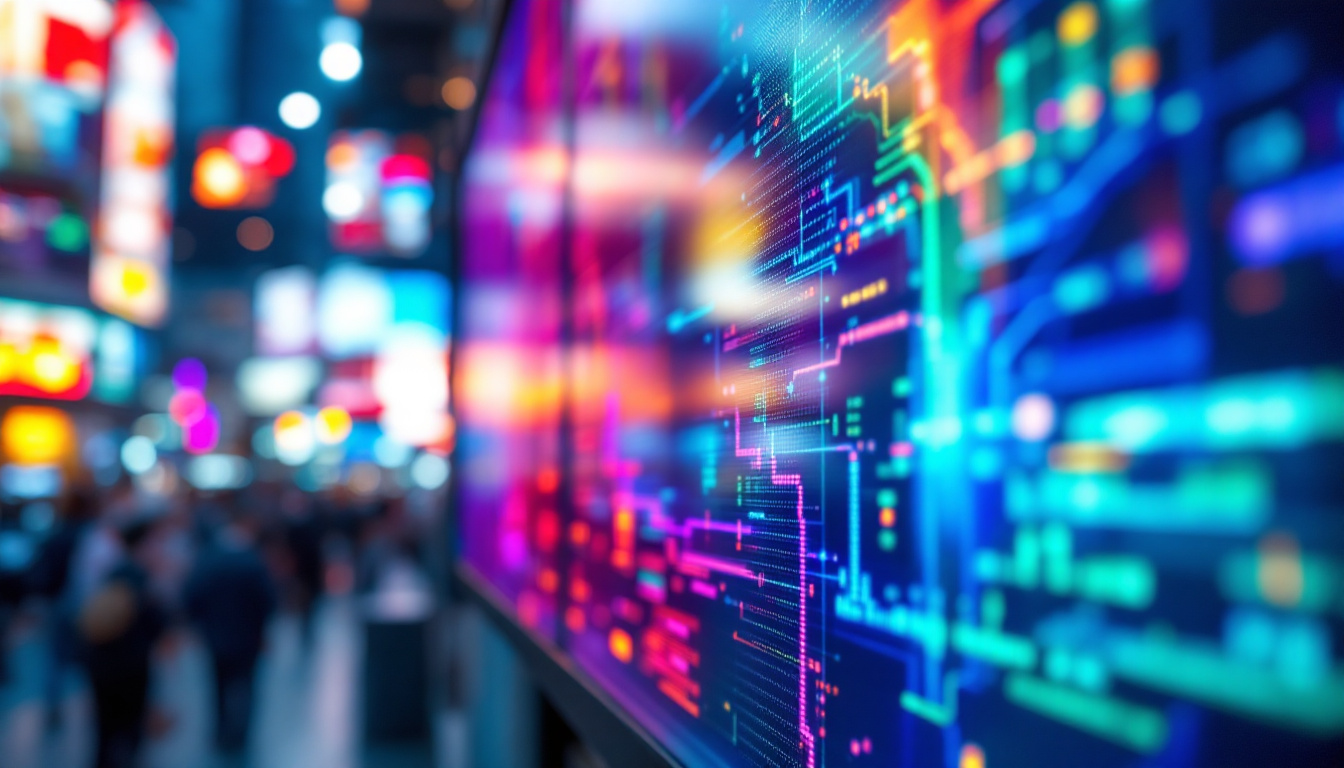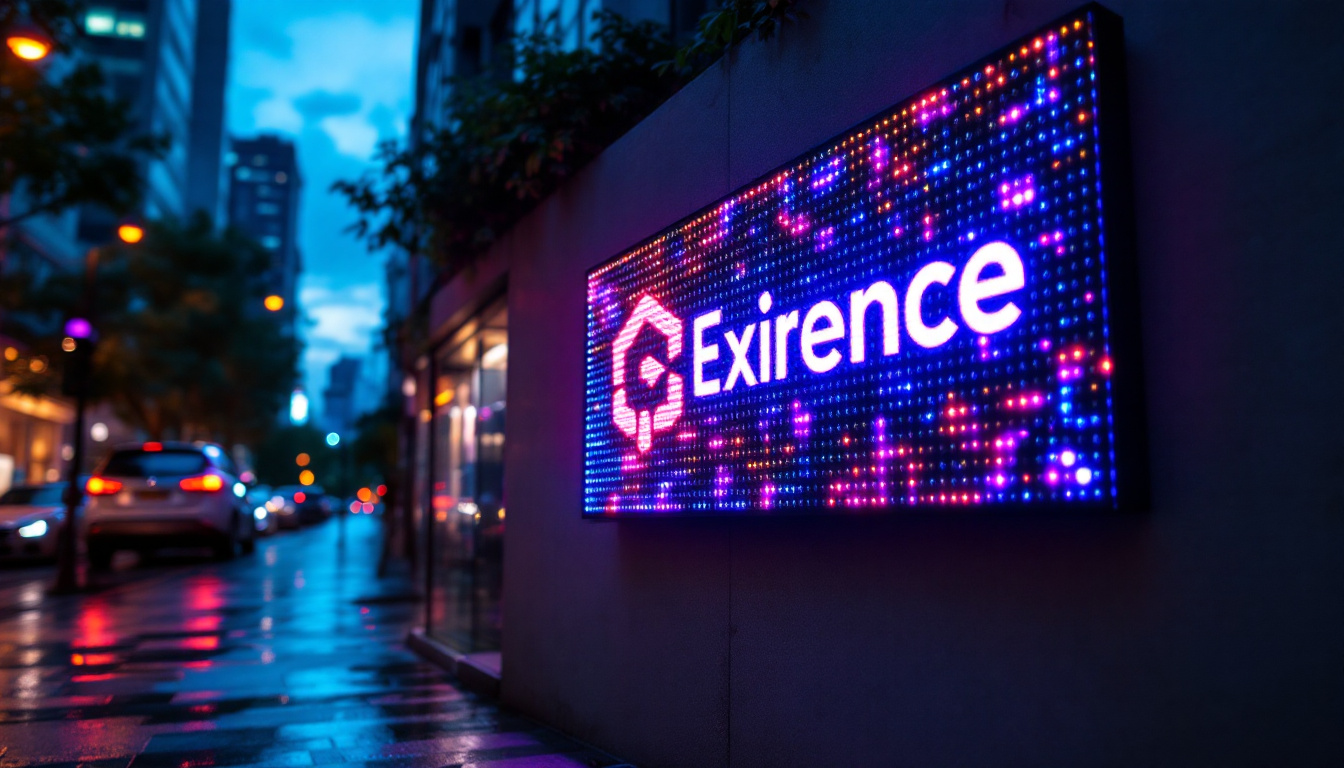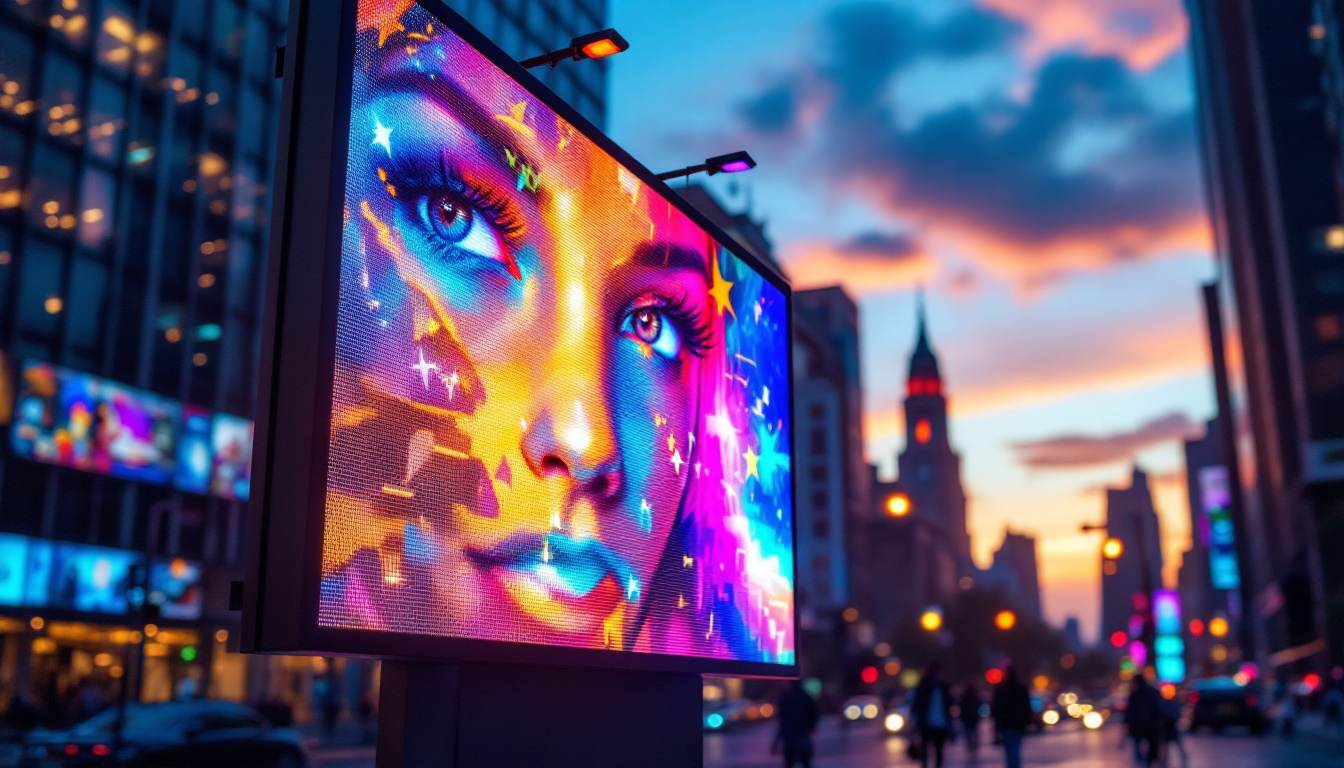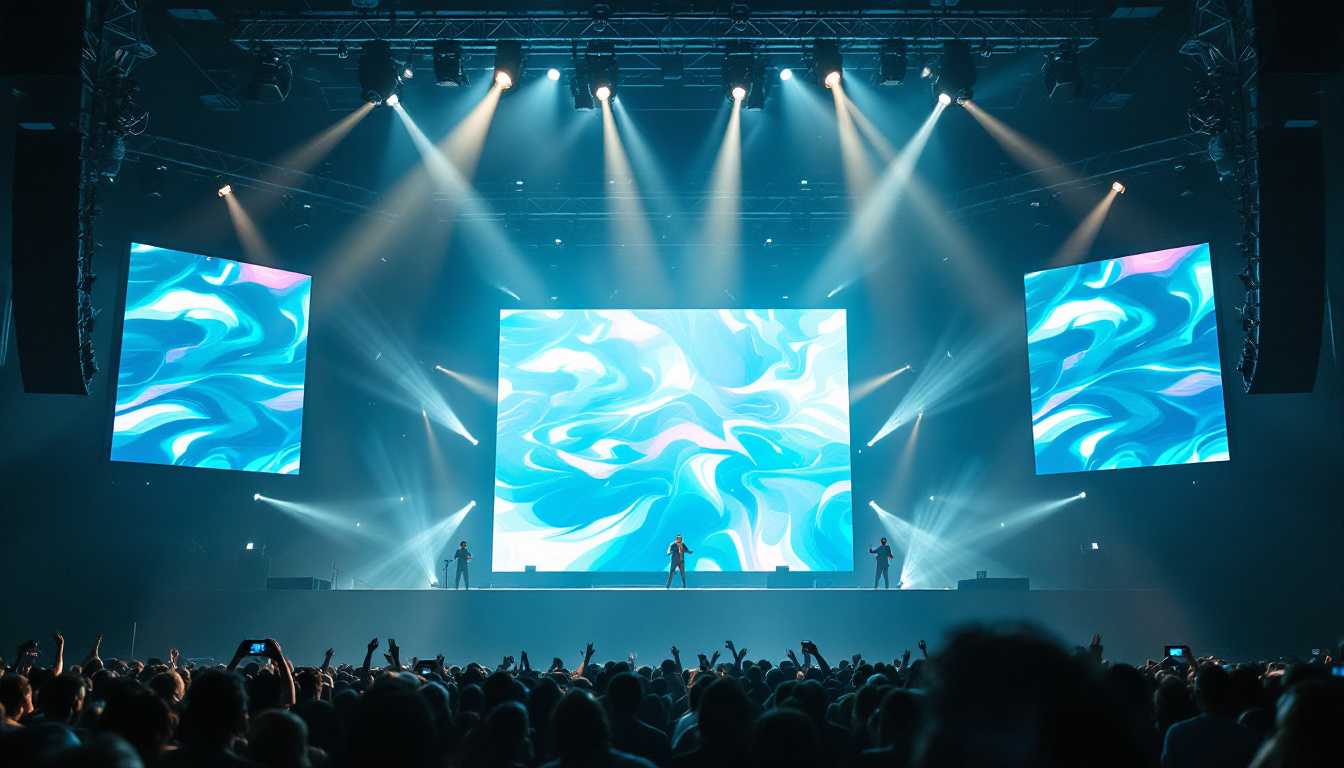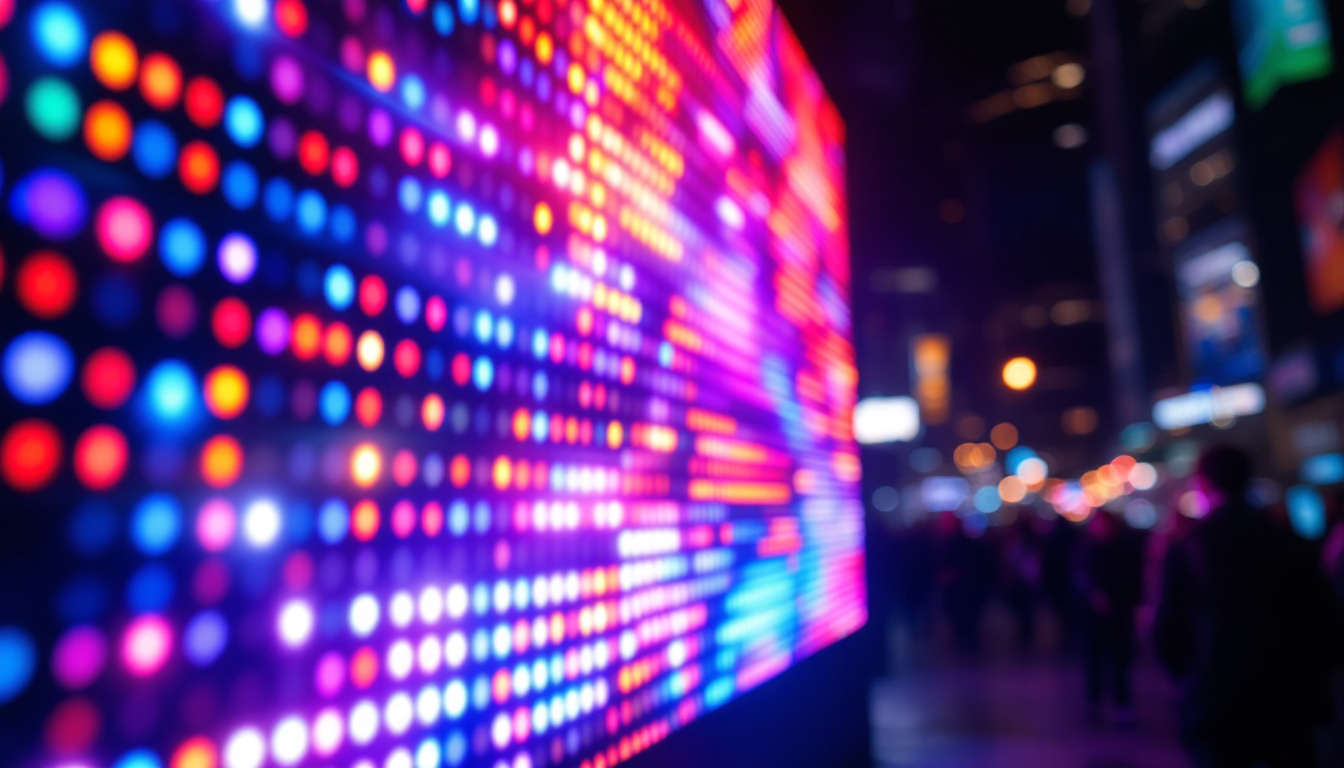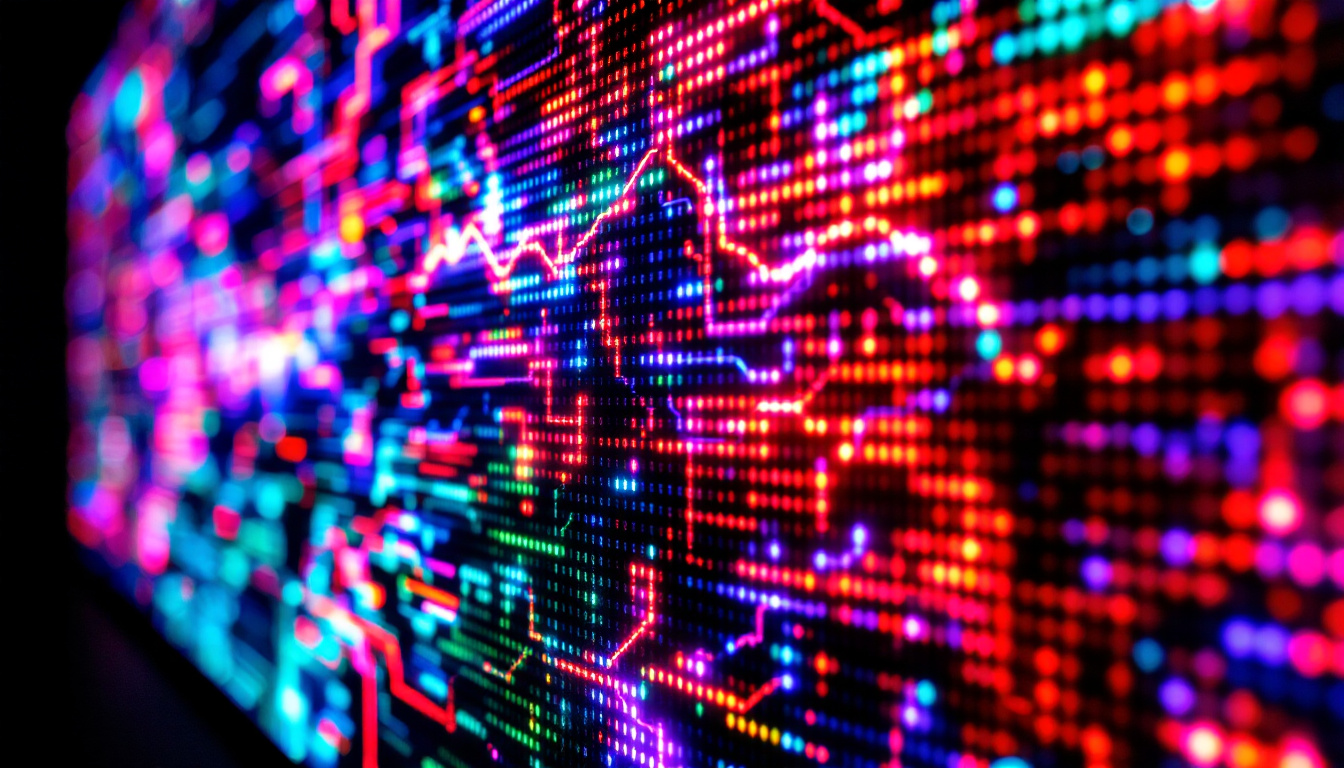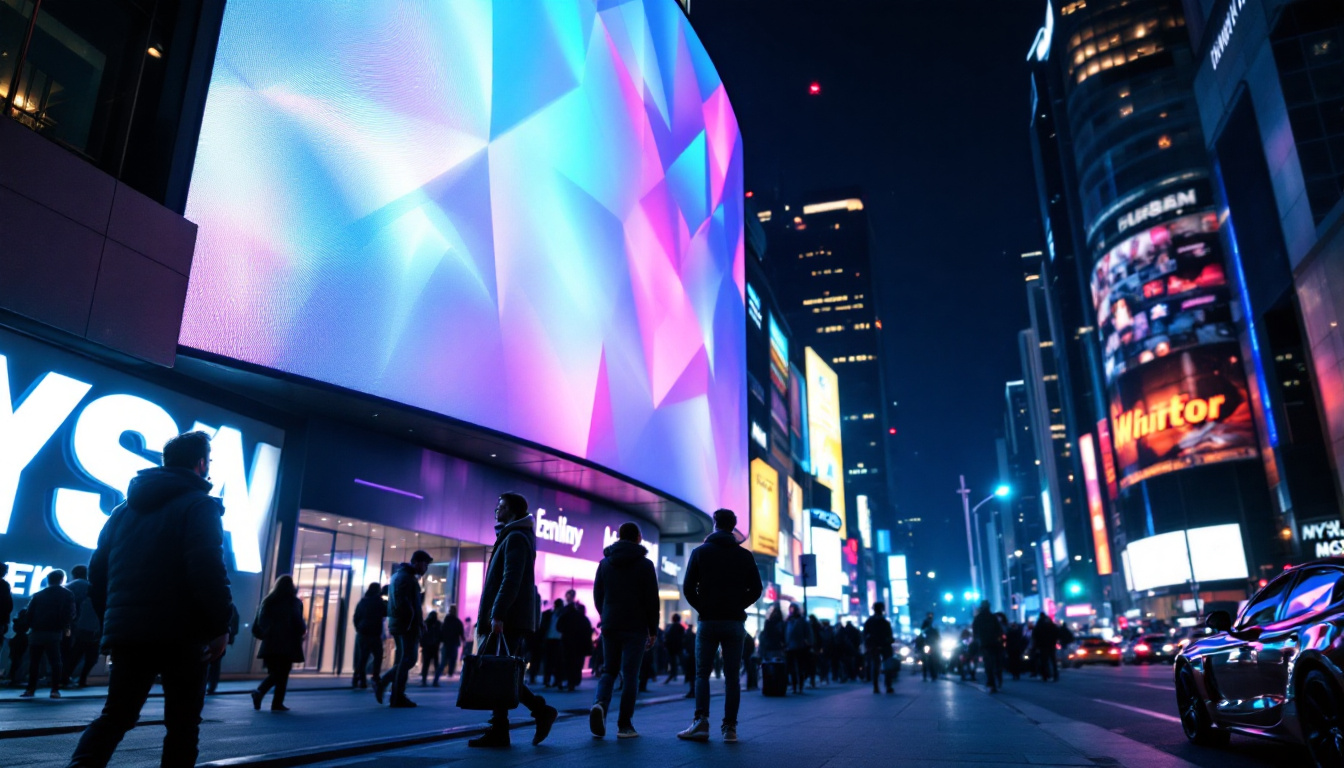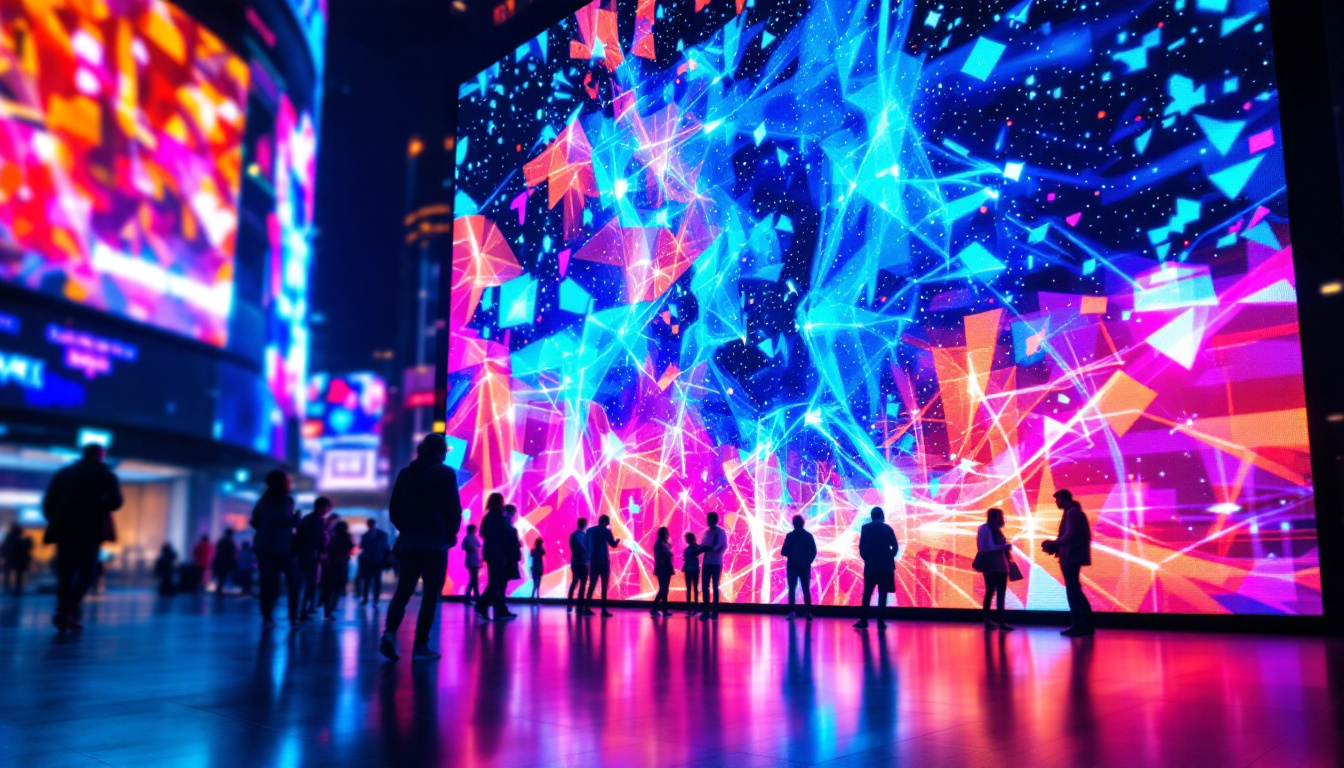In recent years, LED displays have become a ubiquitous part of our visual landscape. From billboards to smartphones, these displays have revolutionized the way information is presented and consumed. This article delves into the intricacies of LED technology, its applications, and the future it holds.
Understanding LED Technology
LED, or Light Emitting Diode, is a semiconductor device that emits light when an electric current passes through it. This technology has evolved significantly since its inception, leading to the development of vibrant and efficient displays. The fundamental principle behind LEDs is electroluminescence, where the movement of electrons in a semiconductor material generates light. Over the years, the efficiency of LEDs has improved dramatically, allowing for lower energy consumption and longer lifespans compared to traditional incandescent bulbs. This has made LEDs a popular choice not only for displays but also for general lighting applications in homes and commercial spaces.
The Components of an LED Display
An LED display consists of several key components that work together to create a cohesive visual experience. The primary elements include the LED chips, the circuit board, and the housing. The LED chips are responsible for generating light, while the circuit board manages the electrical signals that control the display. The housing protects these components and provides structural integrity. In addition to these main components, thermal management systems are crucial for maintaining optimal operating temperatures, as excessive heat can diminish the performance and lifespan of the LEDs.
Additionally, the quality of the materials used in these components can significantly affect the display’s performance. High-quality LEDs can produce brighter images with better color accuracy, while durable housing materials ensure longevity and resilience against environmental factors. For instance, displays intended for outdoor use often feature weather-resistant housings and coatings that protect against moisture and UV exposure, ensuring that they remain functional and visually appealing even in harsh conditions.
Types of LED Displays
There are several types of LED displays, each designed for specific applications. The most common types include:
- Direct View LED Displays: These displays are composed of individual LED modules that are directly visible to the viewer. They are often used in large outdoor billboards and sports arenas.
- LED Backlit Displays: These displays use LEDs to illuminate an LCD panel from behind. They are commonly found in televisions and computer monitors, offering improved contrast and color depth.
- Organic LED (OLED) Displays: A newer technology, OLED displays utilize organic compounds that emit light. They are known for their exceptional color accuracy and flexibility, making them ideal for smartphones and high-end televisions.
Furthermore, there are also niche applications such as MicroLED displays, which are made up of microscopic LEDs that can create stunningly high-resolution images with deep blacks and vibrant colors. This technology is still in its infancy but holds great promise for future display innovations, particularly in augmented reality (AR) and virtual reality (VR) environments.
How LED Displays Work
The operation of an LED display is based on a grid of pixels, each made up of red, green, and blue (RGB) LEDs. By adjusting the intensity of each color, the display can create a wide range of colors and images. This pixel-based approach allows for high-resolution displays that can convey intricate details. The ability to control each pixel independently is what enables dynamic content to be displayed, such as videos and animations, making LED displays incredibly versatile.
Moreover, advanced technologies such as pulse-width modulation (PWM) are employed to control brightness levels. This technique adjusts the duration of the electrical pulse sent to each LED, enabling a more nuanced control over brightness without compromising color quality. Additionally, innovations in color calibration and processing algorithms have further enhanced the visual performance of LED displays, allowing for more accurate reproduction of colors and smoother transitions between shades. As a result, LED technology continues to push the boundaries of what is possible in visual display systems, making them an integral part of modern technology.
Applications of LED Displays
LED displays have found applications across various sectors, owing to their versatility and efficiency. From advertising to entertainment, their impact is profound and far-reaching.
Advertising and Marketing
One of the most prominent uses of LED displays is in advertising. Digital billboards and signage have transformed the marketing landscape, allowing businesses to deliver dynamic content that can be updated in real-time. This capability not only attracts attention but also enhances engagement with potential customers.
Additionally, LED displays can be strategically placed in high-traffic areas, maximizing visibility and reach. The ability to showcase multiple advertisements in a single location further increases the return on investment for advertisers.
Entertainment and Events
In the realm of entertainment, LED displays play a crucial role in concerts, sporting events, and theatrical productions. Large-scale LED screens provide audiences with immersive experiences, displaying vivid visuals that complement live performances.
Furthermore, the flexibility of LED technology allows for creative staging and design. For instance, LED walls can be configured in various shapes and sizes, enabling unique visual storytelling that captivates audiences.
Public Information and Transportation
LED displays are also instrumental in public information systems. From train stations to airports, these displays provide real-time updates on schedules, delays, and other essential information. Their clarity and visibility ensure that travelers can make informed decisions quickly.
Moreover, the energy efficiency of LED technology makes it an ideal choice for outdoor applications, where lighting conditions can vary dramatically. This reliability is crucial for maintaining effective communication in public spaces.
The Advantages of LED Displays
LED displays offer numerous advantages that contribute to their widespread adoption. Understanding these benefits can help organizations make informed decisions regarding their visual communication strategies.
Energy Efficiency
One of the standout features of LED displays is their energy efficiency. Compared to traditional display technologies, such as incandescent or fluorescent lights, LEDs consume significantly less power. This not only reduces operational costs but also minimizes environmental impact.
As sustainability becomes a priority for many organizations, the energy-efficient nature of LED displays aligns well with corporate social responsibility goals. This advantage is particularly relevant in large-scale installations, where energy savings can translate into substantial cost reductions over time.
Longevity and Durability
LED displays are known for their longevity, often lasting tens of thousands of hours before requiring replacement. This durability is attributed to the robust construction of LED technology, which is less susceptible to damage from shocks and vibrations compared to traditional displays.
Additionally, many LED displays are designed to withstand harsh environmental conditions, making them suitable for outdoor use. Their resistance to weather elements, such as rain and extreme temperatures, ensures consistent performance and reliability.
High-Quality Visuals
The color accuracy and brightness of LED displays are unparalleled. With the ability to produce vibrant colors and deep blacks, these displays offer an immersive viewing experience. This quality is especially important in applications where visual detail is paramount, such as in medical imaging or high-definition video production.
Furthermore, advancements in LED technology continue to enhance visual performance. Innovations such as HDR (High Dynamic Range) and improved color gamut capabilities are pushing the boundaries of what LED displays can achieve.
Challenges and Considerations
Despite their many advantages, LED displays are not without challenges. Organizations looking to implement this technology should be aware of potential drawbacks and considerations.
Initial Costs
The upfront cost of LED displays can be higher than traditional display technologies. While the long-term savings from energy efficiency and durability can offset these initial expenses, budget constraints may pose a challenge for some organizations.
It is essential to conduct a thorough cost-benefit analysis before making a decision. This analysis should take into account not only the purchase price but also the expected lifespan and operational costs associated with the display.
Viewing Angles and Distance
Another consideration is the viewing angle and distance. While LED displays can offer excellent visibility, their performance may vary based on the viewer’s position. For instance, some LED technologies may exhibit color distortion or reduced brightness when viewed from extreme angles.
To mitigate this issue, it is crucial to select the appropriate type of LED display for the intended application. Understanding the environment and audience dynamics can help ensure optimal viewing experiences.
Maintenance and Upkeep
Although LED displays are generally low-maintenance, they still require regular upkeep to ensure optimal performance. Dust accumulation, environmental factors, and wear and tear can affect image quality over time.
Establishing a maintenance schedule and employing trained personnel to handle repairs can prolong the lifespan of the display and maintain its visual integrity. Organizations should factor in these ongoing maintenance costs when evaluating their investment in LED technology.
The Future of LED Displays
The future of LED displays is bright, with ongoing innovations poised to reshape the landscape of visual communication. As technology continues to advance, several trends are emerging that will influence the development and application of LED displays.
Smart Displays
One of the most exciting trends is the integration of smart technology into LED displays. With the rise of the Internet of Things (IoT), displays are becoming increasingly connected, allowing for real-time data integration and interactivity.
Smart LED displays can adapt their content based on environmental conditions, audience demographics, and other factors. This level of customization enhances engagement and ensures that the displayed content is relevant and timely.
Flexible and Transparent Displays
Another area of innovation is the development of flexible and transparent LED displays. These technologies open up new possibilities for design and application, allowing displays to be integrated into various surfaces, from windows to clothing.
Flexible displays can bend and conform to different shapes, enabling creative installations that were previously unimaginable. Transparent displays, on the other hand, can provide information without obstructing the view, making them ideal for retail environments and architectural applications.
Enhanced Color and Resolution
As demand for high-quality visuals continues to grow, advancements in color accuracy and resolution are expected to be at the forefront of LED display technology. Emerging technologies, such as microLED and miniLED, promise to deliver even finer pixel densities and improved color reproduction.
These innovations will not only enhance the viewing experience but also expand the potential applications of LED displays in fields such as virtual reality, augmented reality, and high-end cinema.
Conclusion
LED displays have transformed the way information is conveyed, providing vibrant, energy-efficient, and durable solutions for a wide range of applications. As technology continues to evolve, the potential for LED displays is limitless, paving the way for smarter, more interactive, and visually stunning experiences.
Understanding the intricacies of LED technology, its advantages, and its challenges is essential for organizations looking to harness its power. By staying informed about emerging trends and innovations, businesses can position themselves at the forefront of the visual communication revolution.
Discover the Future of Visual Communication with LumenMatrix
As you’ve seen, LED displays are at the forefront of innovation, offering unparalleled opportunities for dynamic and engaging visual communication. LumenMatrix stands as a leading innovator in this field, committed to providing advanced LED display solutions that bring your brand to life. Whether you’re interested in Indoor LED Wall Displays, Outdoor LED Wall Displays, or specialized solutions like Vehicle LED Displays and LED Sports Displays, LumenMatrix has the technology to revolutionize your visual presence. Experience the difference with our state-of-the-art LED display modules and take the first step towards transforming your visual communication strategy. Check out LumenMatrix LED Display Solutions and join the visual revolution today.

